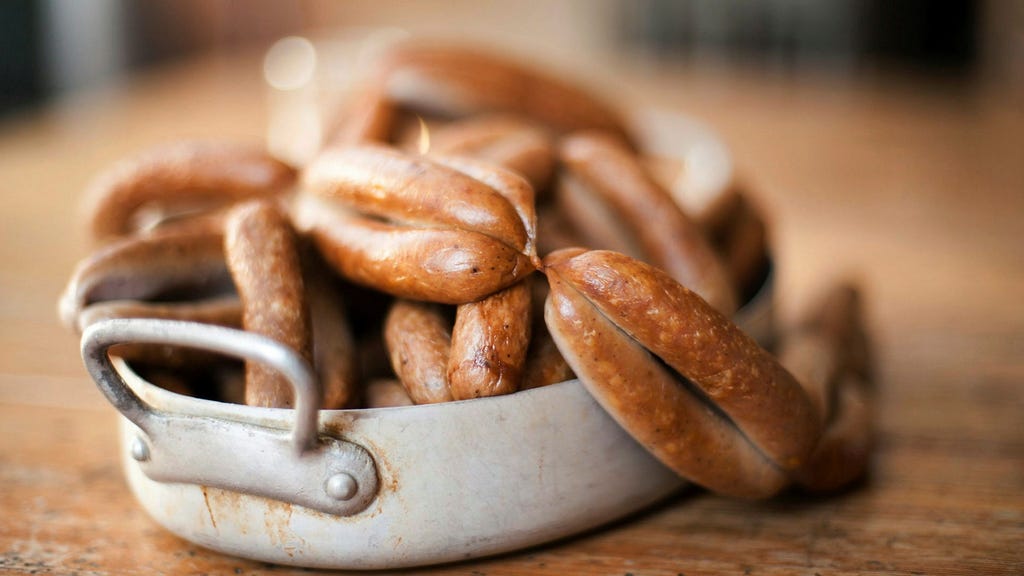The festive season brings with it a plethora of culinary traditions, some more palatable than others. While some cultures threaten misbehaving children with Krampus, a devil-like figure wielding birch branches, or the Icelandic ogress Grýla and her monstrous cat, others might simply brandish the humble prinskorv, a small, spiced sausage common in Scandinavian cuisine, as a deterrent. However, the real culinary anxieties often revolve around the Christmas feast itself, a meal steeped in tradition yet subject to the ever-shifting sands of dietary trends.
Throughout history, the criteria for acceptable Christmas fare have varied dramatically. Homemade, low-calorie, vegetarian, organic, and additive-free have all enjoyed their time in the spotlight as desirable qualities. The latest target for dietary scrutiny is the perceived over-processing of traditional Christmas meats like sausages, ham, and meatballs. While ongoing debates about food processing and health persist, a general consensus supports the benefits of reduced meat consumption in favor of a diet richer in vegetables, fiber, and nuts. However, this nutritional guidance should not translate into judgment or shaming of individual dietary choices, especially during festive occasions.
Christmas dinner, at its core, is about communal celebration, a ritualistic sharing of food and traditions passed down through generations. The specific dishes may evolve, incorporating new influences like Thai-spiced herring or vegan Jansson’s Temptation (a traditional Swedish potato casserole), but the underlying purpose remains: to connect with loved ones and partake in a shared narrative. This narrative often includes familiar favorites like prinskorv, gravlax, ham, and readily available meatballs, chosen not just for their taste, but also for their nostalgic connection to past Christmases. These foods evoke a sense of belonging and continuity, linking us to a shared culinary history.
These traditional dishes, often cured, smoked, pickled, or dried, owe their longevity to preservation techniques developed in pre-refrigeration times. As food production modernized, these processes became increasingly industrialized, leading to greater affordability and accessibility. While this industrialization has undeniably impacted the nature of these foods, it has also democratized access to traditional flavors, allowing more people to participate in these time-honored culinary customs.
Healthy eating is about establishing sustainable long-term habits, not about rigidly restricting specific foods on isolated occasions, particularly during holidays where food plays a multifaceted role extending beyond mere sustenance. Christmas dinner is a social event, a time for connection and shared experiences, where the symbolic meaning of food transcends its nutritional value. Rigorous scientific research on nutrition remains complex, making definitive pronouncements on optimal dietary practices challenging. Therefore, agonizing over the “processed” nature of Christmas fare seems counterproductive, especially when the alternative could be spending precious time with loved ones preparing elaborate homemade versions. Unless one is a dedicated charcuterie enthusiast, embracing the convenience of pre-made options allows for more quality time spent enjoying the festivities.
Christmas is a time for kindness, both towards others and oneself. The perceived “transgressions” of indulging in traditionally processed foods on Christmas Day, one day out of 365, should not be a source of guilt. Even factoring in a few days of leftover enjoyment, there remain ample opportunities throughout the year to prioritize a health-conscious diet rich in legumes, whole grains, root vegetables, and nuts. Ultimately, the message is clear: let us approach the Christmas feast with a spirit of joy and acceptance, appreciating the cultural significance and communal value of the meal, regardless of the level of processing involved. Let the traditions, and the prinskorv, be enjoyed in peace.














